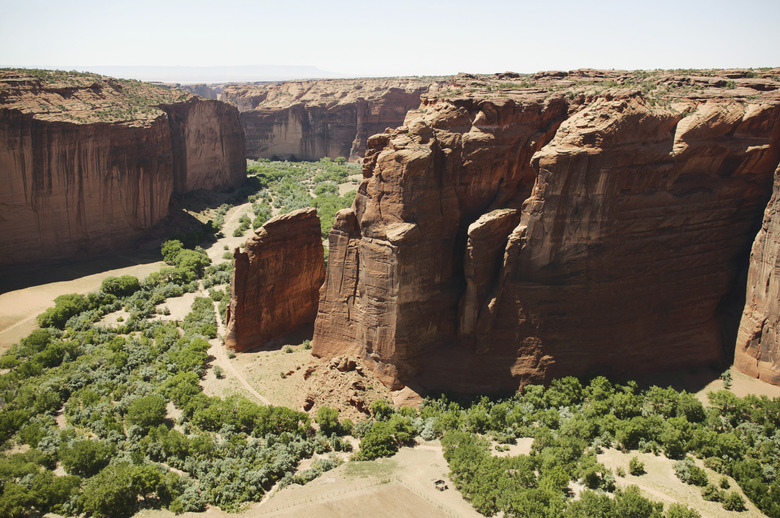Density & Temperature Of The Lithosphere
Translated from its Latin roots, the word "lithosphere" means "sphere of rock." Earth's lithosphere encompasses rock that forms the surface layer of the crust and extends below to the beginning of the mantle. Reaching depths of 200 kilometers (120 miles) in continental areas, the lithosphere is brittle and constantly shifting due to fluctuations in density and temperature of the surrounding rock.
The Lithosphere
The Lithosphere
Of the three layers of the Earth — the inner core, the mantle or middle layers, and the outer crust of the surface — the lithosphere includes the crust and the upper portion of the mantle. Continental lithosphere is the thickest in the world. Beneath the ocean the lithosphere is thinner, extending down only about 100 kilometers (60 miles).
Lithospheric Density
Lithospheric Density
The density of the lithosphere varies depending on temperature, depth and age. At about 50 kilometers (30 miles) below the Earth's surface, density measurements reach 200,000 pounds per square inch (13,790 bars). Due to the pressure from the above crust and mantle, lithospheric density generally increases as both age of the surrounding rock and depth increase.
Temperature
Temperature
Temperature of the lithosphere can range from a crustal temperature of zero degrees Celsius (32 degrees Fahrenheit) to an upper mantle temperature of 500 degrees Celsius (932 degrees Fahrenheit). When combined with the pressure and density found in deeper layers of lithosphere, high temperatures cause rock to melt and flow beneath the surface — a key factor in tectonic and seismic activity around the globe.
Oceanic Lithosphere
Oceanic Lithosphere
The oceanic lithosphere is subject to the same laws of physics as continental lithosphere, although density of oceanic lithosphere depends more on the thickness of the upper mantle than the surface crust. The sinking or "subduction" of more dense oceanic lithosphere beneath less dense layers can cause strong earthquakes, such as those that occur along the rim of the Pacific Ocean.
Cite This Article
MLA
Echolls, Taylor. "Density & Temperature Of The Lithosphere" sciencing.com, https://www.sciencing.com/density-temperature-lithosphere-23341/. 24 April 2017.
APA
Echolls, Taylor. (2017, April 24). Density & Temperature Of The Lithosphere. sciencing.com. Retrieved from https://www.sciencing.com/density-temperature-lithosphere-23341/
Chicago
Echolls, Taylor. Density & Temperature Of The Lithosphere last modified March 24, 2022. https://www.sciencing.com/density-temperature-lithosphere-23341/
